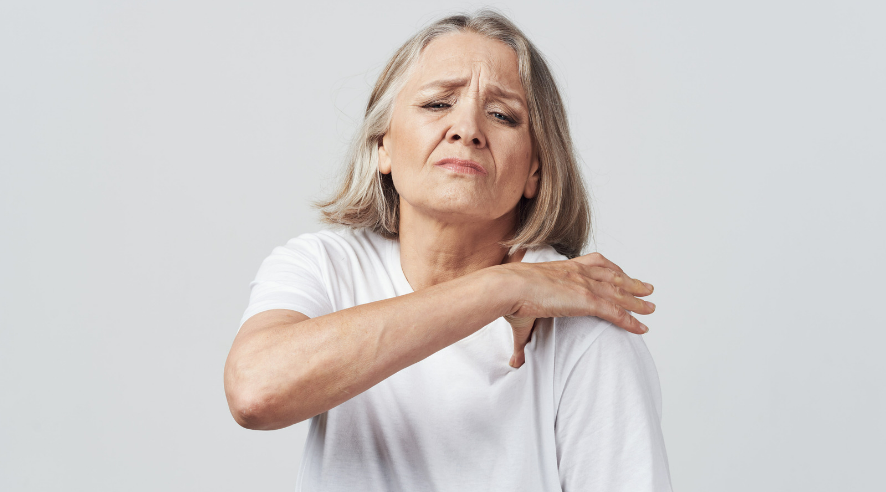Arthritis and Joints Treatment: A Comprehensive Guide
- 17 July 2022

Arthritis is a medical condition that is characterized by inflammation in the joints. This inflammation can cause pain, stiffness, and difficulty in movement. Arthritis is a broad term that includes many types of joint diseases. The most common types of arthritis are osteoarthritis and rheumatoid arthritis. Osteoarthritis is a degenerative disease that affects the cartilage in the joints, while rheumatoid arthritis is an autoimmune disease that causes inflammation in the joints.
Joints Pain
Joints pain is one of the most common symptoms of arthritis. Pain in the joints can be caused by a variety of factors, including inflammation, damage to the joints, and wear and tear. Joint pain can be acute or chronic, and it can range from mild to severe. Joint pain can also be accompanied by other symptoms, such as stiffness, swelling, and redness.
Joints Treatment
The treatment for arthritis depends on the type and severity of the disease. In general, the treatment for arthritis focuses on reducing pain, improving joint function, and slowing down the progression of the disease. There are many treatments available for arthritis, including medication, physical therapy, surgery, and lifestyle changes.
The treatment for arthritis and joint pain depends on the type and severity of the disease. In general, the treatment for arthritis focuses on reducing pain, improving joint function, and slowing down the progression of the disease.
Medication
Medication is often the first line of treatment for arthritis. There are many types of medication that can be used to treat arthritis, including non-steroidal anti-inflammatory drugs (NSAIDs), corticosteroids, disease-modifying antirheumatic drugs (DMARDs), and biologic agents. NSAIDs are used to reduce pain and inflammation, while corticosteroids are used to reduce inflammation. DMARDs and biologic agents are used to slow down the progression of the disease.
Physical Therapy
Physical therapy is another common treatment for arthritis. Physical therapy can help improve joint function, reduce pain, and increase mobility. Physical therapy can include exercises, stretches, and manual therapy. Physical therapy can also help improve strength and flexibility, which can help prevent further damage to the joints.
There are many types of medication that can be used to treat arthritis and joint pain. These include:
- NSAIDs: These are pain relievers that also reduce inflammation.
- Corticosteroids: These are anti-inflammatory drugs that can be taken orally or injected into the joint.
- DMARDs: These are disease-modifying drugs that can slow down the progression of the disease.
- Biologic agents: These are drugs that target specific components of the immune system that contribute to inflammation in the joints.
Surgery
Surgery is often used as a last resort for arthritis. Surgery is typically used when other treatments have failed, or when the arthritis is severe. There are many types of surgery that can be used to treat arthritis, including joint replacement surgery, arthroscopy, and synovectomy. Joint replacement surgery involves replacing the damaged joint with an artificial joint. Arthroscopy involves using a small camera to examine the joint, and synovectomy involves removing the inflamed synovial tissue.
In severe cases of arthritis, joint replacement surgery may be necessary. Joint replacement surgery involves removing the damaged joint and replacing it with an artificial joint. This procedure can improve joint function and reduce pain, but it is a major surgery with a long recovery time.
Lifestyle Changes
Lifestyle changes can also help manage arthritis. Lifestyle changes can include maintaining a healthy weight, eating a healthy diet, and getting regular exercise. Maintaining a healthy weight can help reduce the stress on the joints, while a healthy diet can help reduce inflammation. Regular exercise can help improve joint function and reduce pain.
Making lifestyle changes can help reduce joint pain and improve joint function in people with arthritis. Maintaining a healthy weight can reduce the amount of pressure on the joints, while eating a healthy diet can provide the body with the nutrients it needs to repair and maintain joint tissue. Regular exercise can also help improve joint function and reduce pain, but it is important to choose low-impact exercises that do not put too much stress on the joints.
Arthritis
Arthritis is a complex medical condition that involves inflammation in the joints. This inflammation can cause pain, stiffness, and swelling in the joints. There are over 100 types of arthritis, with the most common being osteoarthritis and rheumatoid arthritis.
Osteoarthritis
Osteoarthritis is the most common type of arthritis, affecting millions of people worldwide. It is a degenerative disease that affects the cartilage in the joints. Cartilage is a flexible tissue that cushions the joints, allowing them to move smoothly. In osteoarthritis, the cartilage breaks down, causing pain, stiffness, and limited movement.
The most common symptoms of osteoarthritis include:
- Joint pain
- Stiffness
- Swelling
- Limited movement
- Crunching or popping sounds when the joint is moved
- Bony growths around the joint
The treatment for osteoarthritis includes:
Medication: NSAIDs, corticosteroids, and pain relievers can be used to reduce pain and inflammation.
Physical therapy: Exercises, stretches, and manual therapy can help improve joint function and reduce pain.
Surgery: Joint replacement surgery can be used to replace the damaged joint with an artificial joint.
Rheumatoid arthritis
Rheumatoid arthritis is an autoimmune disease that causes inflammation in the joints. In rheumatoid arthritis, the body's immune system attacks the synovial membrane, which is the tissue that lines the joints. This causes pain, stiffness, and swelling in the joints.
The most common symptoms of rheumatoid arthritis include:
- Joint pain
- Stiffness
- Swelling
- Fatigue
- Fever
- Weight loss
- Joint deformities
The treatment for rheumatoid arthritis includes:
Medication: DMARDs and biologic agents can be used to reduce inflammation and slow down the progression of the disease.
Physical therapy: Exercises, stretches, and manual therapy can help improve joint function and reduce pain.
Surgery: Joint replacement surgery can be used to replace the damaged joint with an artificial joint.
Joints Pain
Joint pain is a common symptom of arthritis. Joint pain can be caused by inflammation, damage to the joints, and wear and tear. Joint pain can be acute or chronic, and it can range from mild to severe.
There are many factors that can contribute to joint pain, including:
- Aging
- Genetics
- Injuries
- Overuse
- Obesity
- Infection
- Autoimmune diseases
The treatment for joint pain depends on the underlying cause. Treatment options for joint pain include:
- Medication: NSAIDs, corticosteroids, and pain relievers can be used to reduce pain and inflammation.
- Physical therapy: Exercises, stretches, and manual therapy can help improve joint function and reduce pain.
- Surgery: Joint replacement surgery can be used to replace the damaged joint with an artificial joint.
- Lifestyle changes: Maintaining a healthy weight, eating a healthy diet, and getting regular exercise can help reduce joint pain.
Conclusion
Arthritis is a common medical condition that affects millions of people around the world. The symptoms of arthritis can be debilitating and can significantly impact a person's quality of life. However, with proper treatment, the symptoms of arthritis can be managed, and joint function can be improved. If you are experiencing joint pain or other symptoms of arthritis, it is important to speak with your doctor about your treatment options. With the right treatment, you can manage your arthritis and live a happy, healthy life.




